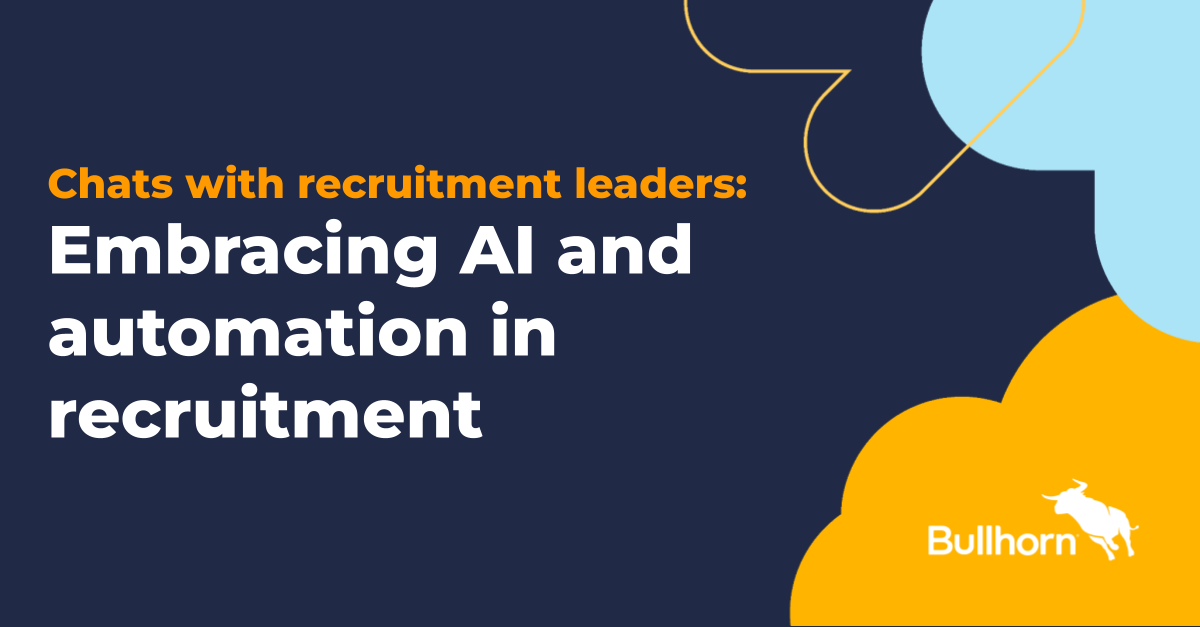Risk or reward—that’s the key question HR due diligence aims to answer when evaluating human capital before a merger or acquisition. Do the assets outweigh the liabilities? What risks are hidden? How can talent and leadership be maximized? What happens after the deal closes? How well will teams, systems, and cultures integrate? Will the deal create value, or will it destroy it?
Thorough analysis allows HR professionals to play a critical role in shaping the success of a merged organization. Ignoring these key factors, however, can risk the entire future of the business.
The numbers speak for themselves: Over 70% of acquisitions fail to deliver their value goals, according to HBR. Deloitte reports that cultural integration issues lead to failure in nearly one in three M&As. And PwC highlights the value lost when employees leave after a transaction.
Don’t fall into these traps. This guide will show you how HR’s involvement in early due diligence can help identify human capital risks, unlock value, and ensure a smooth and successful post-merger integration.
Contents
What is HR due diligence?
What does HR due diligence involve?
Why is HR due diligence essential?
How to conduct HR due diligence
Common challenges in HR due diligence
Free HR due diligence checklist
What is HR due diligence?
Due diligence is the thorough review, conducted by a potential buyer, of a business (the ‘target’) being considered for a merger or acquisition. Its purpose? To evaluate the company’s assets and liabilities to determine its value and attractiveness.
When it comes to HR due diligence, this entails a meticulous and systematic review of a target company’s human capital, with regard to its people and culture.
This involves a deep analysis of compensation and benefits structures, talent profiles, organizational culture, compliance with labor laws, and existing HR policies and practices. Its purpose is to uncover potential risks, liabilities, and integration challenges, as well as identify opportunities for synergy and value creation related to the company’s workforce, to help inform decisions on whether the acquisition or merger should proceed.
So, who conducts HR due diligence?
It’s primarily performed by the acquiring company’s HR team, often augmented by external HR consultants who bring specialized expertise and an objective perspective. Collaboration with legal counsel is also vital to ensure compliance and mitigate legal risks.
Close coordination with the Finance department is also essential to assess the financial implications of HR-related findings, including potential severance costs, pension liabilities, or the cost of harmonizing benefit plans, because these insights can directly inform valuation, negotiation strategy, and the success of post-merger integration.
Merger vs. acquisition: The HR due diligence approach
Adapting your HR due diligence process to the specific transaction type matters because the strategic emphasis and HR priorities will differ significantly depending on whether the deal is a merger or an acquisition:
In a merger:
- Two similarly-sized companies join to form a new entity. HR due diligence emphasizes harmonizing two distinct cultures, policies, and talent pools into a unified organization.
- This means assessing compatibility for co-creation, blending cultures to form a new one, and defining new roles, visions, and values that serve a shared purpose.
- The power dynamic in mergers is typically more balanced, demanding collaborative integration and the co-creation of new structures and policies.
In an acquisition:
- One company buys another, integrating the acquired entity into its existing identity, structure, culture, and policies.
- Beyond the standard pre-transaction HR due diligence, the focus is on integration. This often means the acquiring company imposes its framework, yet it still requires diplomacy, strategic talent retention, and careful management of staffing changes, such as layoffs or recruitment for new roles aligned with the acquirer’s brand.
- The emphasis shifts to strategic talent leverage – assessing how the acquired talent can be maximized within the acquirer’s existing framework and developing targeted retention plans to preserve the unique value that made the acquired company attractive.
What does HR due diligence involve?
HR due diligence is all about digging deep and paying close attention to detail to uncover both opportunities and risks in human capital. Here’s where to focus your efforts:
- Talent analysis: Take a close look at the workforce. Understand demographics, skill sets, key talent segments, and capabilities critical to the combined company’s future growth. Identify high-value employees, potential talent gaps, or redundancies.
- HR policies and procedures: Review the company’s HR framework, including handbooks, onboarding processes, performance management systems, disciplinary procedures, and training programs. This will help reveal how efficient the policies are, whether they comply with regulations, and any challenges in merging or improving them.
- Compensation and benefits: Examine salaries, bonuses, equity plans, and employee benefits like health and retirement plans. Look for discrepancies, unvested liabilities (like stock options or bonuses payable later), harmonization costs (e.g., aligning salaries or benefits), and possible impacts on morale and retention after the merger.
- Culture and values: While intangible, the company culture is vital to success. Analyze the prevailing norms, communication styles, decision-making processes, and employee engagement levels. When you understand the principle of ‘how things are done around here, you can better anticipate post-deal integration friction points and strategize for cultural alignment.
- Risks and liabilities: Investigate existing or hidden risks such as lawsuits, discrimination claims, union issues, compliance violations (e.g., wage violations), or underfunded pension obligations. Identifying these early can help avoid costly surprises later.
- Leadership capabilities and succession planning: Evaluate the leadership team’s experience, capabilities, and alignment with the acquiring company’s vision. Identify critical roles to be retained, potential leadership gaps or overlaps, the overall depth of leadership talent, and succession plans for key positions. This helps you plan for any leadership changes or talent shortages post-acquisition.
- Employment contracts and agreements: Review key employment contracts, non-compete and non-solicitation clauses, and intellectual property agreements. This ensures clarity on obligations and protects the company’s proprietary information.
- HR technology and systems: Examine the company’s HR tech stack, including HR software, payroll systems, and talent management tools. Identify challenges with system integration, data migration, and the costs of consolidating or upgrading to a unified platform.
Why is HR due diligence essential?
In mergers and acquisitions, your HR diligence analysis can make or break the deal. Here’s why it’s so important:
- Improved risk management: The human element in any business poses a significant risk. Pitfalls, such as hidden legal liabilities, undisclosed compensation obligations, or the critical danger of losing key talent post-deal, can all severely impact finances. For example, discovering an undisclosed class-action lawsuit after the acquisition could significantly inflate costs and damage the company’s reputation. A proactive review also highlights the risk of losing key talent, which can impact projections and earnings.
- Smoother integration process: Early insights into any cultural differences, varying HR policies, and structural mismatches between organizations are invaluable. Being armed with this foresight allows your HR team to proactively build communication strategies, align teams, and implement effective change management programs to minimize post-merger friction.
- Accurate valuation: HR due diligence ensures a clear financial picture and stronger negotiations. Labor costs, pension obligations, equity considerations, and benefits alignment all play a big role in determining the true value of the company.
- Alignment of HR strategy: If the target’s existing HR approach, talent philosophy, and operational capabilities don’t align with the acquiring company’s strategic priorities, it indicates a significant overhaul is necessary.
- Optimized workforce planning: Analyzing crossover skillsets identifies areas where combined capabilities create greater strength, as well as potential overlaps. Careful planning is crucial to prevent costly layoffs, maintain morale, and align your new workforce structure with strategic objectives. For instance, merging two sales teams without clear role definitions can lead to a mass exodus of top performers from both sides, often driven by fear and uncertainty.
Build resilient HR capabilities for times of change
Whether navigating a merger, restructuring, rapid growth, or other organizational change, your HR team must be prepared to assess, align, and lead through change.
With AIHR for Business, you empower your team to:
✅ Build skills in change management, workforce planning, and stakeholder communication
✅ Guide leaders and employees through uncertainty with confidence
✅ Drive long-term value by aligning people strategy with business goals
🎯 Give your HR team the tools to manage change — before, during, and after it happens.
How to conduct HR due diligence
While it’s true that HR due diligence is a structured and formal process, it’s certainly not a check-box exercise. Your findings will directly shape the pivotal decisions of evaluating deal viability, assessing the true value of human capital and culture, and forecasting the success of post-deal integration. Follow these steps to guide your analysis:
Step 1: Define your scope
Outline which HR areas need assessment, keeping your deal goals in mind. The target company’s industry can impact HR risks, such as compliance issues in healthcare or finance, or challenges with hiring and retention.
Workforce size affects HR system complexity, unionization risks, and post-acquisition integration efforts. Geographic presence may bring legal and cultural factors into play. Focus on the areas that matter most.
Step 2: Assemble your expert team
Engage internal HR experts for organizational context and external M&A HR consultants for specialized expertise, objective benchmarks, and identification of overlooked risks. If your target operates in foreign jurisdictions, seek the help of local labor law experts and professionals.
Step 3: Gather documentation
Request and review pertinent HR materials, including organizational charts, employee contracts, policy handbooks, compensation and benefits summaries, collective bargaining agreements, compliance records, and audit reports. This data is the critical foundation of your analysis.
Step 4: Financial scrutiny
Quantify the monetary impact of human capital by assessing direct liabilities, such as underfunded pensions, deferred compensation, and true benefit costs. Evaluate financial exposure from current or pending litigation, misclassified employees, and any anticipated severance costs. This exercise is vital to ensuring an accurate valuation and preventing costly post-deal surprises.
Step 5: Conduct strategic interviews
Interview key HR leadership and functional heads for qualitative insights into informal practices, unwritten rules, underlying people risks, and challenges that are not visible on paper.
Step 6: Analyze workforce data
Examine headcount trends, turnover and retention rates, compensation structures, and diversity data. Assess the current workforce, talent pipeline, and succession plans to understand leadership and capability gaps or overlaps.
Step 7: Evaluate legal and compliance risks
Review the target’s litigation history to unearth liabilities. Check compliance with local and international labor laws, including wage and hour, workplace safety, and anti-discrimination statutes. For global deals, scrutinize visa and immigration processes to avoid fines, disruptions, and reputational damage.
Step 8: Assess HR technology and processes
Review the target’s HR systems for payroll, performance management, and recruiting. Assess the current HR tech stack’s scalability, security, and integration potential.
Step 9: Review organizational culture
Identify core values, management styles, key cultural elements, and unspoken rules. Speak to employees and observe behaviors to get a clear notion of ‘how business is done’ and uncover potential synergies or clashing working styles. This critical analysis will inform your post-deal integration strategy.
Step 10: Identify and report risks
Consolidate your findings and highlight any red flags, inconsistencies, and liabilities. Where feasible, suggest actionable strategies to tackle challenges.
Step 11: Support integration planning
Post-deal integration can mean the difference between success and failure in mergers and acquisitions, so use the insights you’ve collected to inform your planning. Design onboarding, align benefits, and develop employee communication strategies for a smooth transition and effective operations.
Step 12: Appoint a dedicated post-deal lead
Designate an individual or cross-functional team to focus solely on post-deal alignment, cultural assimilation, and talent retention. This singular focus is needed to ensure your human capital integration is a success.
Step 13: Continuous monitoring
Implement a framework for continuous monitoring of human capital after the acquisition, adapting your strategies as integration progresses and new challenges emerge.
Step 14: Post-mortem and lessons learned
After the deal closes and integration is complete, review the HR due diligence process itself. What was missed? What was over-emphasized? This feedback will help you refine your future capabilities.

Common challenges in HR due diligence
Despite your best planning efforts, HR due diligence is rarely a straightforward process, so don’t let unexpected roadblocks derail your project. By anticipating these common obstacles, you’ll be better equipped to overcome them:
Limited access to information
Target companies may restrict access to sensitive data due to confidentiality concerns or a lack of preparedness.
Tip: Establish clear, robust NDAs at the outset and be clear on the strategic necessity for each data request to build trust and show your professional rigor.
Inconsistent or disorganized data
The HR data you need from the target might be spread across various systems, incomplete, or lack standardization.
Tip: Provide the target with clear data request templates and offer support in extracting and organizing information by deploying your own junior analysts to assist under supervision, where possible.
Intense deal timelines
M&A processes often operate under tight deadlines, pressuring HR due diligence to be completed with limited access to information and highly compressed review periods.
Implement a rigorous prioritization framework, focusing your resources on areas with the highest potential financial or integration risk (such as critical talent retention, major compliance liabilities, and cost audits). If your budget allows, leverage specialist M&A HR consultants to help expedite complex data analysis and accelerate insights delivery.
Resistance or lack of cooperation
Target company employees, including HR, might be uncooperative due to fear of job loss or general uncertainty.
Tip: Emphasize the strategic importance of cooperation for a smooth transition for all employees. Maintain open, empathetic communication channels, and get explicit buy-in from target leadership.
Cultural nuance misinterpretation
Understanding an ingrained (and often unspoken) organizational culture from a distance can be challenging. This can lead to misjudgments about potential integration ease or friction.
Tip: Conduct empathetic interviews with a diverse cross-section of employees to identify consistent themes and unspoken rules that define the true cultural landscape.
Navigating global complexity
Assessing international operations can involve navigating unfamiliar local labor laws, benefits, and cultural norms.
Tip: Engage reputable local legal counsel and HR experts in each key jurisdiction early in the process for specialised and accurate insights.
Uncovering undocumented liabilities
Some critical risks, like informal discriminatory practices or unaddressed grievances, won’t appear in official documents.
Tip: Complement data review with confidential, structured interviews and anonymous employee surveys (where feasible and ethical) to uncover these hidden issues. Alternatively, consider having management complete sworn affidavits to affirm the absence of liabilities, if they are willing to do so.
HR due diligence checklist
Carrying out HR due diligence is a hefty task, but using this downloadable checklist makes it easier. Why? Because we’ve put in the work to help streamline the process and make sure you don’t miss any important steps.


To wrap up
M&A processes often run on tight deadlines as buyers and sellers work to close their deals. For HR leaders, it’s crucial to handle human capital due diligence with a clear and organized approach. Using a detailed checklist helps bring structure to the process, ensuring all key steps are completed and the deal moves forward on a solid foundation.
Follow us on social media to stay up to date with the latest HR news and trends
Nadine von Moltke was the Managing Editor of Entrepreneur magazine South Africa for over ten years. She has interviewed over 400 business owners and professionals across different sectors and industries and writes thought leadership content and how-to advice for businesses across the globe.












